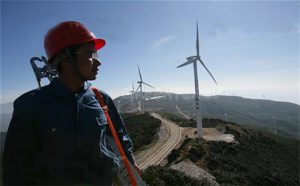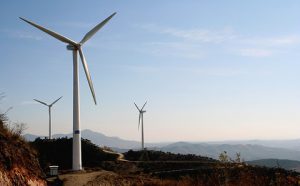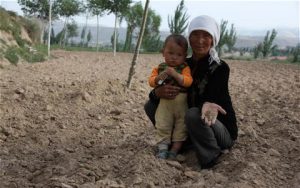US and Chinese leaders just wrapped up the sixth annual U.S.-China Strategic and Economic Dialogue. As in previous years, energy and climate cooperation was a key focus of the strategic track, which is headed up by US secretary of state John Kerry and Chinese state councilor Yang Jiechi.
The bilateral talks have become a critical platform for US-China climate cooperation because they allow both nations to operate outside of the rigid playbook that defines interactions under the United Nations Framework Convention on Climate Change, or UNFCCC. When US and Chinese officials meet to discuss climate issues in a multilateral context they always wind up on opposing teams. When they meet bilaterally like this, there are no teams. They generally can toss out the playbook and get down to business.
Even when multilateral debates do creep into the bilateral discussions, those debates can occur in parallel with down-to-business climate sessions that actually produce something concrete.
That is what happened last week. There were three big climate outcomes from the July 2014 dialogue that has just passed: US and Chinese officials added a few new projects to the to-do list for the joint climate working group, including a new initiative on forests; they agreed to move forward and launch technology demonstration projects for two of the five pre-existing initiatives; and they traded information about plans under way in both nations for reducing greenhouse-gas emissions beyond 2020.
The working group is a new platform launched last year to drive five bilateral project streams: vehicle emissions; smart grids; emission data collection and management; energy efficient buildings, industry and transport; carbon capture, utilization and storage (CCUS). The big outcome from the 2013 dialogue was reaching agreement on that list. Now, one year later, implementation plans are in place to drive collaboration in each of those issue areas, and joint demonstration projects are in the pipeline for the smart grid and CCUS initiatives.
Each step forward with the working group is hard-won because all of these projects require coordination across line agencies. The working group is headed up by US State Department climate envoy Todd Stern on the US side and National Development and Reform Commission vice chairman Xie Zhenhua on the Chinese side, but those two officials cannot implement any of these projects on their own. Cooperation on smart grids, for example, requires both sides to engage energy technology specialists from other agencies. That makes the working group a great tool for capacity building on both sides. Once communication networks are in place to bring the US Environmental Protection Administration, the US State Department, NDRC, and China’s Environment Ministry together for one emission-data project, more projects can be added to the pipeline.
Finding the common ground
Unlike the working group outcomes, there were no official announcements detailing concrete progress in the information exchange on post-2020 emission-reduction plans. After that exchange, US climate envoy Todd Stern reported that the two nations “are certainly not at a point where anybody is talking about concrete numbers”. Even if information sharing does not produce any sudden aha moments, however, over the longer term those dialogues can help US and Chinese leaders figure out where they may have common ground to push for something big at the multilateral level.
Climate advocates around the world are waiting for US and Chinese leaders to announce what they are willing to bring to the table for the big UNFCCC climate negotiations coming up in December 2015. Two big issues are at stake. The first is ambition, or how big of an effort each nation is willing to make to move beyond a business-as-usual emission-reduction scenario. The second is how to divide emission-reduction responsibilities between rich and poor countries.
China wants to maintain the current firewall that divides rich and poor countries under the Kyoto Protocol. Under that model, rich countries are in one bucket, poor countries are in another, and only rich countries make binding commitments to reduce emissions. China is currently on the poor country side of that wall, and Chinese leaders are trying every trick in the book to keep that divide in place and avoid opening a can of worms over what China’s income level is today and what responsibilities a middle-income China owes the rest of the world in the battle to combat climate change. In contrast, the US would love to see China accept more responsibility in line with its development status, and the US opposes using legacy divides that put China in the same bucket as a truly poor country like Sudan.
US and Chinese officials have been sparring over these issues for years, and will likely continue doing so right up to the deadline to negotiate a new global agreement.
Meanwhile, while negotiators battle over principles, the US-China climate change working group will keep marching forward to demonstrate what our nations can do together when they operate outside of that battlefield.
That is why the bilateral talks are so impactful. Without these down-to-business bilateral initiatives, it would be easy to assume that the US and China do not share common interests on energy and climate issues. In fact, the opposite is true, and the more the Strategic and Economic Dialogue can do to illuminate those commonalities, the closer we will be to something truly game-changing.







